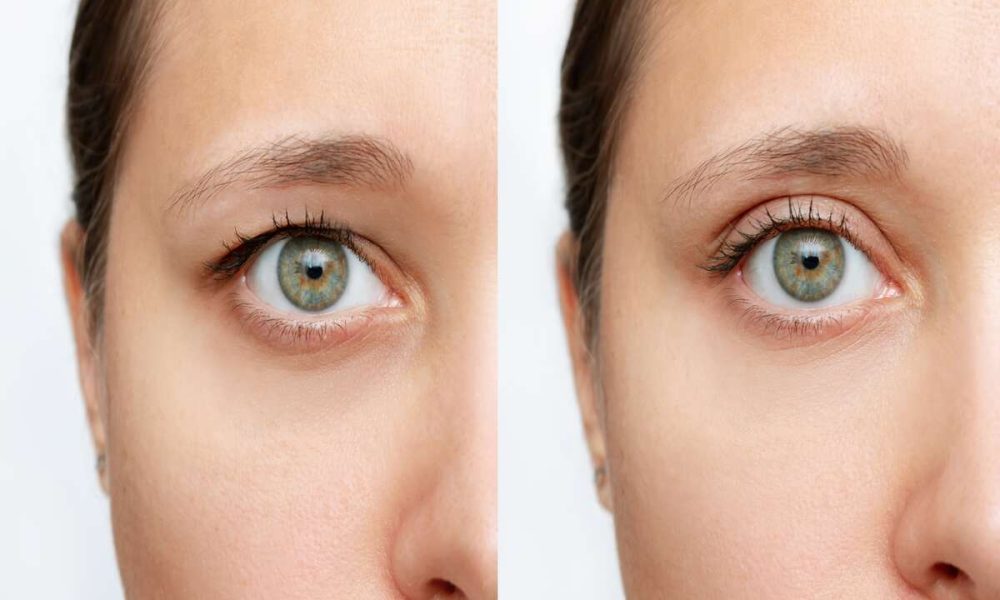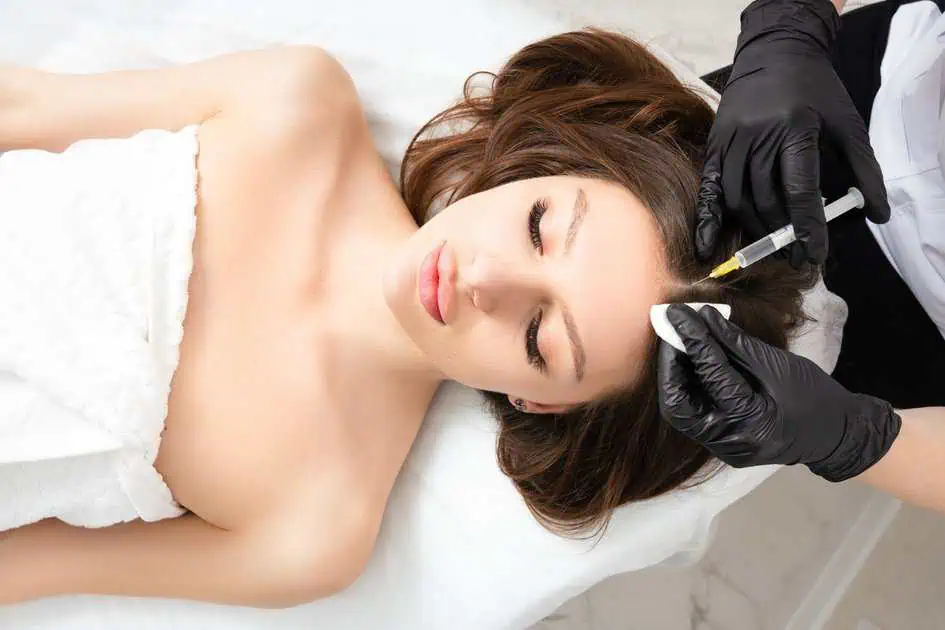Blepharoptosis, commonly known as droopy eyelids, isn’t just a cosmetic issue; it can seriously affect someone’s vision and quality of life. Traditionally, correcting this condition has meant going under the knife – but what if there was a less invasive option? This is where UPNEEQ comes in, a new player in the field challenging the status quo of blepharoptosis treatment. Approved by the FDA, UPNEEQ is a prescription eye drop that promises to lift the eyelids without surgery. This raises a crucial question: Could UPNEEQ be a game-changer, potentially replacing surgical interventions for many patients?
What is Blepharoptosis?
Blepharoptosis, more commonly known as droopy eyelids, is when the upper eyelid falls to a lower position than usual. This drooping can vary from mild to severe; in some cases, it can cover the pupil entirely, obscuring vision. The causes of blepharoptosis are diverse and can include age-related weakening of the eyelid muscles, congenital factors, nerve damage, or a consequence of certain medical conditions like diabetes or a stroke.
The impact of blepharoptosis extends beyond a mere aesthetic concern. It can hinder vision when severe, affecting daily activities like reading or driving. It can also cause eye strain and headaches as sufferers often compensate for reduced vision by raising their eyebrows to lift the drooping eyelids. This constant muscle strain can lead to fatigue and discomfort.
In diagnosing blepharoptosis, doctors typically examine the affected eyelids, measure the height of the eyelid, and assess the strength of the eyelid muscles. They also discuss the patient’s medical history to understand underlying causes or associated conditions.
Traditionally, the treatment for blepharoptosis has been predominantly surgical, especially in more severe cases. The surgery aims to tighten the levator muscle (the muscle responsible for lifting the eyelid) or to reattach it to a more appropriate position, thereby improving both the appearance and function of the eyelid.
What is UPNEEQ?
UPNEEQ is a prescription eye drop designed to treat mild to moderate acquired blepharoptosis, or droopy eyelids. The active ingredient in UPNEEQ is oxymetazoline hydrochloride, a compound more commonly associated with nasal decongestant sprays. However, when used in the context of blepharoptosis, oxymetazoline has a different mechanism of action.
UPNEEQ’s effectiveness in treating droopy eyelids lies in its ability to stimulate the Müller’s muscle. This muscle is a small, involuntary muscle in the upper eyelid. Under normal circumstances, the Müller’s muscle contributes to lifting the eyelid. When UPNEEQ is administered, the oxymetazoline hydrochloride acts as an alpha-adrenergic agonist, binding to and activating alpha-adrenergic receptors in the sympathetic nervous system.
This activation leads to a response that causes the Müller’s muscle to contract, elevating the upper eyelid. The lifting effect provided by UPNEEQ can improve the field of vision for individuals with blepharoptosis and enhance their overall appearance by reducing the droopiness of the eyelids.
UPNEEQ’s effect is temporary; the drops must be applied daily to maintain the lifting effect. It is effective in clinical trials, with many patients experiencing noticeable improvement in eyelid elevation after use.
Is It A Viable Alternative?
As a prescription eye drop explicitly designed for mild to moderate blepharoptosis, UPNEEQ presents an intriguing alternative to the more invasive surgical procedures typically associated with this condition. In this section, we delve into the critical question: Is UPNEEQ a viable alternative to surgery for those suffering from droopy eyelids? Here are points to consider:
Effectiveness for Mild to Moderate Cases:
Non-Surgical Benefits:
- Offers a non-invasive treatment option.
- Reduces the risks associated with surgery, such as infection or anesthesia complications.
- It can be more appealing for those who are opposed to surgery or have medical conditions that make surgery riskier.
Convenience and Usability:
- Simple to use as a daily eye drop.
- Avoids the need for hospital visits and surgical recovery time.
Temporary Solution:
- The effects of UPNEEQ are not permanent; daily application is required to maintain eyelid elevation.
- This could be seen as a downside for those seeking a long-term solution.
Cost and Accessibility:
- The cost of ongoing UPNEEQ treatment versus a one-time surgical expense must be considered.
- Insurance coverage for UPNEEQ may vary, affecting its accessibility for some patients.
Patient Suitability:
- Ideal for patients with mild to moderate blepharoptosis.
- It may not be suitable for patients with certain eye conditions or those taking specific medications.
Side Effects:
- Generally mild, such as eye irritation or redness.
- Less severe than potential surgical complications.
Precautions You Need To Consider
When considering using UPNEEQ for treating blepharoptosis, it’s crucial to be aware of several precautions to ensure safety and effectiveness. Here are the key points to consider:
Underlying Medical Conditions:
- Suppose you have a history of stroke, brain aneurysm, Horner syndrome, myasthenia gravis, or any condition affecting eye muscle movement, eye infections, or eye tumors. In that case, it’s vital to inform your doctor. These conditions can cause low-lying lids and may influence the treatment approach.
Impact on Blood Pressure:
- UPNEEQ may affect your blood pressure. This is especially important for those with heart disease, uncontrolled high or low blood pressure, or those who experience faintness at rest or when quickly standing up. Monitoring for worsening symptoms is essential.
Circulatory and Immune System Considerations:
- Patients with reduced blood flow to the brain or heart must use UPNEEQ cautiously. Similarly, those with Sjögren’s syndrome, which causes dryness of the eyes and mouth, should be vigilant. Any worsening of symptoms should prompt immediate medical consultation.
Risk of Angle-Closure Glaucoma:
- UPNEEQ may increase the risk of angle-closure glaucoma in patients with untreated narrow-angle glaucoma. This condition is characterized by a rapid increase in eye pressure, which can be a medical emergency. Immediate attention is required if you notice increased pressure in your eye after using UPNEEQ.
Proper Application and Hygiene:
- It’s essential to avoid letting the tip of the UPNEEQ vial touch your eye or any other surface to prevent eye injury or contamination.
- Each vial of UPNEEQ is designed for one-time use only. After use, it should be discarded to maintain hygiene and effectiveness.
Regular Medical Supervision:
- Regular check-ins with your healthcare provider are recommended to monitor the treatment’s effectiveness and check for any adverse effects or complications.
Takeaway
If you’re dealing with droopy eyelids and seeking a non-invasive treatment option, consider reaching out to Evolution Health and Wellness. Our team provides the latest and most effective treatments for blepharoptosis, including UPNEEQ. At Evolution Health and Wellness, we believe in a patient-centered approach, ensuring you receive personalized services tailored to your needs. Don’t let blepharoptosis prevent you from enjoying a whole, active life. Contact us today or book an appointment and discover how we can help you see the world more clearly and confidently. Take the first step towards better eye health and overall wellness with Evolution Health and Wellness.




